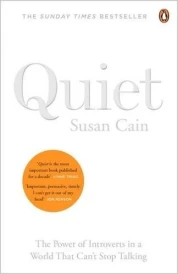I recommend The Power of Habit by Charles Duhigg. It’s a sharp, helpful book which shines a light on the role that habits play in our lives.

Duhigg describes habits as ‘the choices that all of us deliberately make at some point, and then stop thinking about but continue doing, often every day’. He cites a Duke University paper which suggested that ‘more than 40 per cent of the actions people performed each day weren’t actual decisions, but habits.’
Duhigg describes a community as a ‘giant collection of habits’ which got me thinking about habits in schools, inspired by Duhigg’s reassurance that ‘habits can be changed, if we understand how they work’. I was particularly drawn to what the author calls ‘keystone habits’ – ‘keystone habits say that success doesn’t depend in getting every single thing right, but instead relies on identifying a few key priorities and fashioning them into powerful levers.’
So where in our schools might we find these keystone habits through which we can leverage sustained improvement? Here’s my take on the good habits formed by successful schools:
- Classroom doors are open and it’s perfectly normal for teachers and school leaders to wander into their colleagues’ lessons.
- The programme of study in each subject is published so that teachers can plan ahead, students can read ahead and parents can ask informed questions about their child’s learning. This also encourages curriculum continuity and stability.
- Senior leaders are visible: at the bus stops, outside the local shop, in the furthest reaches of the school field, up and down the corridors.
- Classrooms and offices are tidy, reinforcing a message of pride and order.
- Doors are held open.
- Students are greeted on the gate as they arrive each morning.
- Question-level analysis is routine, in all subjects and all years, so that teachers and students are familiar with breaking down their work into smaller chunks and identifying where they need to improve.
- There is pride in students’ work: old exercise books are stapled to new ones, folders keep work in good order, displays showcase the best work.
- They collate and share good practice. They don’t presume that middle leaders know how to run a meeting, that senior leaders know how to line-manage a department, or that heads of year know how to withdraw a student from a class without causing further disruption. These nuggets of expertise are collated, refined and shared.
- Teachers talk about teaching and about their subject. Leaders seek ways of providing time for this.
We talk a lot about school policies and systems – which are usually public – but not so much about habits and routines – which are usually hidden. I think they’re worth exploring.
